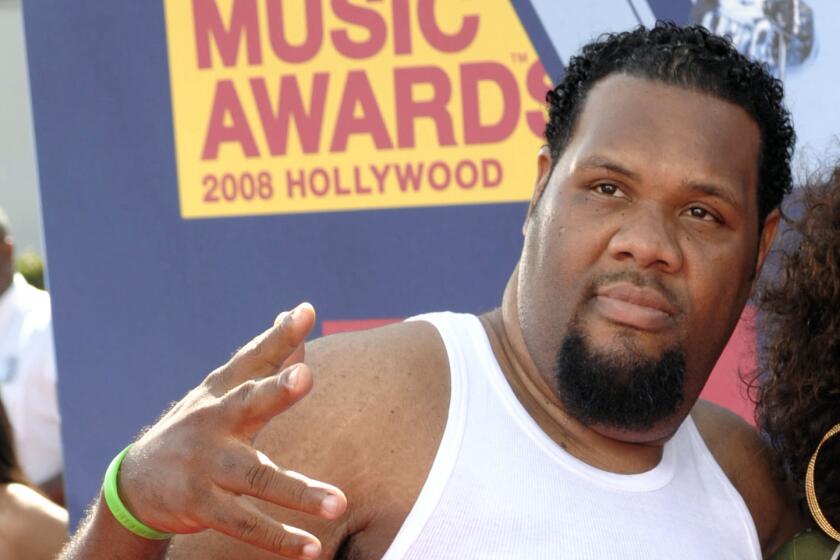Stan Ross dies at 82; producer-engineer co-founded Gold Star studio
Producer-engineer Stan Ross, who co-founded Hollywood’s Gold Star Recording Studio, which has a storied place in rock history as the home of Phil Spector’s innovative “Wall of Sound” technique, has died. He was 82.
Ross died Friday at Providence St. Joseph Medical Center in Burbank of complications following surgery for aneurysms, his family said.
“Stan was born with a musical ear,” said David Gold, an engineer who co-founded Gold Star with Ross in 1950 when both were barely out of their teens. “He would come up with ideas for people who were recording, things that had never been tried before.”
Many of the more than 100 Top 40 hits recorded at Gold Star benefited from Ross’ creativity and inventiveness, Gold said.
The recordings were as diverse as Ritchie Valens’ “La Bamba,” the Champs’ “Tequila,” Eddie Cochran’s “Summertime Blues,” Iron Butterfly’s “In-a-Gadda-Da-Vida,” Sonny and Cher’s “I Got You Babe” and the Beach Boys’ classic 1966 album “Pet Sounds.” Ross contributed the “saw” sound on the band’s “Good Vibrations,” said Lisa Sheridan, a screenwriter who worked with Ross.
While Buffalo Springfield was recording the 1967 hit single “For What It’s Worth,” Ross said “you gotta do this one thing to the drum” and mixed in the sound “of a guitar pick goin’ through a broom, on the straw,” band member Neil Young recalled in the 2007 book “Tearing Down the Wall of Sound.”
Young considered Ross one of the “geniuses of the music business,” according to the book.
Ross mentored a young Spector, who named one of the studio’s echo chambers “the Wall of Sound” as he learned to expertly manipulate the effect. He used it to bring depth to such monumental hits as the Crystals’ “Da Doo Ron Ron,” the Ronettes’ “Be My Baby” and the Righteous Brothers’ “You’ve Lost That Lovin’ Feelin’.”
During the 1965 recording of Jewel Akens’ “The Birds and the Bees,” Ross patched the session guitarist into an organ speaker to create an effect called “chorusing,” Gold said.
Herb Alpert, who made his first six albums at the studio, told The Times in 1984 that a song could seem “terrible” but end up great “after it went through the mixing board, the echo chamber and the mysterious X-factor that recording at Gold Star always seemed to add.”
Stanley Herbert Ross was born Dec. 15, 1928, in New York City to Irving and Anna Rosenthal.
At 15, he moved to Los Angeles, where his father worked as an electrician in Hollywood.
While earning his diploma at Fairfax High School, Ross got a job at a recording studio called Electro-Vox and spent about four years learning from recording pioneer Bert B. Gottschalk.
When Ross sought a raise to $50 a week, Gottschalk balked, so the 21-year-old Ross quit to start his own recording studio with his friend Gold, the electronics wizard who would build all of their equipment.
The modest-looking studio at Santa Monica Boulevard and Vine Street took its name from its founders; the “Star” was a combination of “Stan” and the first letter of Ross’ last name.
Gold Star started out as a demo studio but quickly started doing master recordings for record labels.
The echo chamber that Gold designed was a draw, but so was Ross’ “tremendous personality,” Gold said. “He was extremely likable and very outgoing.”
When “young or inexperienced producers found themselves hopelessly out of their depth,” Ross rescued them, Gold said.
Ross was also known for mentoring talent, including his cousin, Larry Levine, a recording engineer who worked closely with Spector.
By the 1980s, technology had made it possible for many bands to set up their own recording studios, essentially rendering Gold Star obsolete, Ross later said.
After Gold Star closed in 1984 and a mini-mall was built in its place, Ross liked to compare the studio to a long-playing record. It had been open 33 1/3 years.
Ross is survived by his wife of 62 years, Vera of Burbank; two sons, Jeff of Fountain Valley and Brad of San Diego; six grandchildren; and a sister, Ruth Schultz of Van Nuys.
More to Read
Start your day right
Sign up for Essential California for the L.A. Times biggest news, features and recommendations in your inbox six days a week.
You may occasionally receive promotional content from the Los Angeles Times.







